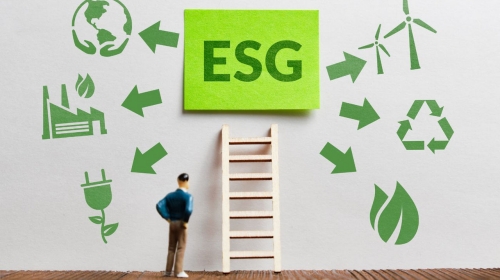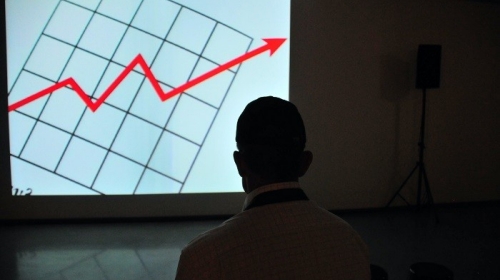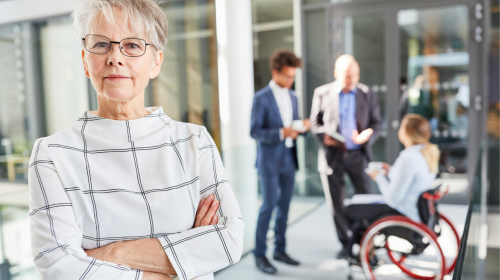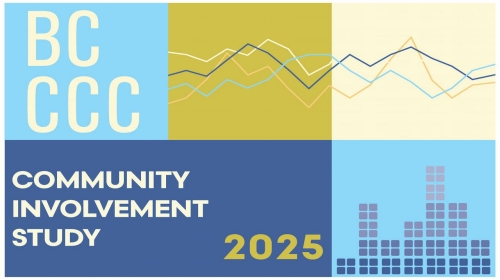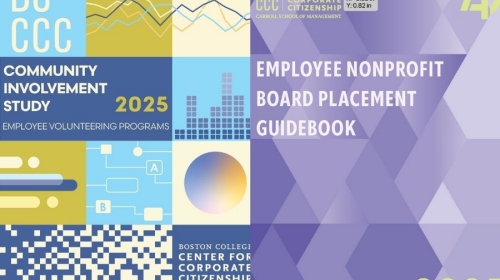WEBINAR: This webinar explores how to measure and communicate your organization's social impact with proven frameworks and strategies that matter to stakeholders.
Community Resilience, Disaster Relief & Disaster Resilience

Community resilience is a broad and multi-faceted concept. It focuses on how communities can withstand and positively adapt to changes caused by major trends or events. Climate change, economic downturns, urbanization, pandemics: these are all factors than can stress a community—exacerbating income gaps, compromising healthcare access, accelerating pollution, just to name a few examples. Natural disasters like hurricanes, earthquakes, tornadoes, floods, and wildfires are also growing risk factors. So, when it comes to community resilience, disaster resilience is one key piece of the larger, overall pie.
With 2024’s Atlantic hurricane season underway, and with the help of BCCCC member company, Travelers, this article will explore community resilience through the lens of disaster resilience. What does this facet of resilience look like? Where did the concept originate? Why is it so important right now? And what can companies be doing to build community/disaster resilience in a world of ever-evolving threats?
Skip ahead to read about the Travelers Fortifies Communities program and borrow on their insights here.

What is community resilience? How does it relate to disaster resilience?
Community resilience encompasses how communities use their physical infrastructure and social bonds to withstand, recover from, or adapt to adverse—sometimes sudden—changes. Disaster resilience is just one facet of community resilience—one in which the risk or driver of change happens to be a storm, flood, fire, etc. Other facets of community resilience might include climate resilience: how is a given city preparing for a warmer future? Or water resilience: how can a given region conserve and protect its supply of fresh water?
Below are some different definitions for “resilience” as it pertains to communities:
The United Nations Office for Disaster Risk Reduction (UNDRR) definition of resilience:
“The ability of a system, community, or society exposed to hazards to resist, absorb, accommodate, adapt to, transform, and recover from the effects of a hazard in a timely and efficient manner, including through the preservation and restoration of its essential basic structures and functions through risk management.”
The U.S. Department of Homeland Security’s definition of resilience:
“The ability to adapt to changing conditions and withstand and rapidly recover from disruption.”
The European Commission’s definition of community resilience:
“The ability not only to withstand and cope with challenges but also to transform in a sustainable, fair, and democratic manner.”
What is the history of community and disaster resilience?
Because the concept of community or disaster resilience has implications for many different fields—some of them overlapping—it’s difficult to pinpoint exactly when the term became a corporate community involvement focus area. But there are some key moments in time that help to illustrate the evolution of disaster relief and resilience—from reactive to proactive; from theoretical considerations to environmental, social, and governance imperatives.
1803 – 1950
Congress passes 128 separate laws to address disaster relief. Because there was no comprehensive legislation covering disaster relief, Congress had to pass a new law to provide federal funds for each disaster as it occurred. Finally, in 1950, the first Federal Disaster Relief Act was passed, authorizing the president to supplement state and local funds as needed, in response to major disasters.
1973
C.S. Holling—an ecologist exploring the human dimensions of global change—defines ecological resilience as, “the capacity of an ecosystem to absorb repeated disturbances or shocks, and adapt to change without fundamentally switching to an alternative stable state.” This definition was important because it invited a broad shift in social and environmental systems thinking. Given the increasing number of unexpected, external pressures on environments, Holling advocated for a focus on the relationships between the different parts of a system and the “conditions of persistence” that supported a capacity to absorb and adapt.
1974
A massive tornado outbreak across the central and eastern U.S. results in 335 fatalities and 6,000 injuries. Entire communities are leveled. Subsequently, an updated Disaster Relief Act is signed into law.
1992
Hurricane Andrew hits Florida, killing 65 people and destroying 63,500 homes. At the time, there were over 400 different building codes in the state. It would take another ten years for Florida to formally adopt a more stringent, state-wide alternative.
2005
Hurricane Katrina destroys the Gulf Coast, causing nearly 1,400 casualties, $160 billion in damages, and a 29% drop in the population of New Orleans. The devastating storm forced government and community leaders to explore resilience as a necessary paradigm shift in emergency preparedness and urban planning.
2009
In the wake of the Black Saturday Bushfires that killed 173 people and left hundreds homeless, the Council of Australian Governments (COAG) adopts a whole-of-nation, resilience-based approach to disaster management, recognizing that “a national, coordinated, and cooperative effort is needed to enhance Australia’s capacity to withstand and recover from emergencies and disasters.”
2011
Travelers begins partnering with Habitat for Humanity and the Insurance Institute for Business & Home Safety (IBHS) to build affordable, wind-resistant homes.
According to BCCCC’s 2011 Community Involvement Study, “disaster relief” as a community involvement priority scores an average 2.8—on a scale of 1 to 5—among surveyed CSR professionals. This same year the U.S. went on to experience a slew of deadly tornados, an intense drought from the Southern Rockies through Texas and Louisiana, historic flooding along the Ohio and Mississippi Rivers, Hurricane Irene, a record-breaking wildfire season, and a summer so hot that states across the country reached new high temperatures both during the day and during (what should have been) the cooler overnight hours.
2012
Immediately following what was—at that time—the worst year on record for extreme weather and national disasters in the United States, eight federal agencies commissioned a committee of experts to look at ways to increase disaster resilience.
2013
One study examining corporate community involvement responses to small-scale, medium, and major disasters (from 1980 through 2006) finds that most companies were actually more inclined to increase corporate giving in the wake of a smaller event (less than $1 billion in damages). Major disasters, on the other hand, prompted companies to hold back amidst the instability.
2014
The U.S. Department of Homeland Security recognized “national preparedness and resilience” in the 2014 Quadrennial Homeland Security Review, which established a series of goals and objectives in the areas of critical infrastructure, global movement, and supply chain systems.
2015
Nearly 80% of companies surveyed by BCCCC still did not include disaster relief anywhere in their Top Five social issues addressed through corporate community involvement.
2016
The International Federation of Red Cross and Red Crescent Societies set out to operationalize a framework for community resilience. They identified six landmarks for strengthening communities in a “different, smarter way.”
2017
The United States officially recognizes resilience in national doctrine in the 2017 National Security Strategy. BCCCC receives its first member request asking about climate resilience. Meanwhile, 2017 turned out to be worse than 2011, in terms of economic damages caused by weather and climate disasters. Above and beyond, 2020 was worse still. The upwardly destructive trend continued in 2021.
2021
The United Nations identifies resilience as a common thread across the three UN pillars of development, human rights, and peace and security, as well as a “prerequisite for achieving the ambitions of the 2030 Agenda for Sustainable Development and the Sustainable Development Goals (SDGs).”
2022
The Community Disaster Resilience Zones Act is signed into law, amending the 1988 Stafford Act, and with the goal of “build[ing] disaster resilience across the nation by driving federal, public and private resources to the most at-risk and in-need jurisdictions.” Initial zone designations included 483 communities across the U.S.
2023
BCCCC releases its 2023 Community Involvement Study, which indicates that nearly 40% of companies surveyed now rank disaster relief among their Top Five community involvement priorities. Other companies begin asking BCCCC about incorporating “resilience” into disaster relief programming.
From disaster relief to disaster resilience: Why should companies embrace a new paradigm?
In a recent interview, the team at Travelers summed up the answer to this question pretty well.
“With today’s increased frequency of severe weather, traditional disaster relief funding often gets caught in a reactive cycle of evaluating events and determining which ones to prioritize,” explains Erin Haberman, Senior Director of Community Relations at Travelers and Assistant Vice President of the Travelers Foundation. “This strains budgets and resources, and can lead to funding being depleted before disaster seasons end. The thought behind disaster resilience is to prepare communities in hard-hit areas so that they better withstand storms and the need for eventual response is lessened.”
A key area of Travelers’ community work is related to creating safe, stable neighborhoods by supporting organizations that show leadership in disaster preparation, response and recovery.
Putting funds toward resilience can also be more cost effective. In 2018, a FEMA report found that every dollar spent on disaster resilience saves between $6 and $13 in damages. FEMA is mindful to add these estimates don’t include the many invaluable, soft-cost savings associated with avoiding destroyed homes and communities—decreased rates of domestic violence, for example, or the preservation of historic landmarks and local culture.

SPOTLIGHT: Travelers Fortifies Communities
Starting in 2011, the Travelers Fortifies Communities program began as a way to invest in community resilience. Its goal was to help reduce the possibility that a disaster-prone area would be severely impacted by a hurricane or wind storm. Because even though storms can happen anywhere, Travelers was attuned to the reality that certain areas—lower-income communities and communities of color—are often disproportionately affected or less equipped to recover. By investing in disaster resilience efforts, and strengthening these communities against future weather threats, Travelers Fortifies also aimed to build equity and disrupt cycles of poverty.
The program started out with a focus on fortifying hurricane-prone communities along the U.S. Gulf Coast. A few years later it expanded to the Atlantic Coast. Since that time—and with mounting evidence of its success—the company has broadened the scope to include tornado disaster resilience, as well; they’ve begun working with partners to fortify homes in the hardest tornado-hit areas of the country.
“We’re in the business of mitigating risk and helping our customers protect the things that matter most,” explains Erin Haberman, Senior Director of Community Relations at Travelers and Assistant Vice President of the Travelers Foundation. “So, supporting community resiliency projects and nonprofits was a natural connection.”
Key to the effort are Travelers’ national disaster response partners, SBP and Team Rubicon, who dig in to construct hundreds of IBHS-certified FORTIFIEDTM homes (homes built beyond minimum code requirements). In addition to these hands-on efforts, Travelers also partners with Smart Home America and Insurance Institute for Business & Home Safety (IBHS), to raise awareness about FORTIFIED building and advocate for this standard as a required building code.
The partnerships are managed through the Travelers Foundation. Strategically, the company seeks the input and expertise of its catastrophe strategy and response teams, as well as its personal insurance business.
The results?
“We are seeing the FORTIFIED homes perform exactly as designed,” affirms Haberman. “They are withstanding extreme weather in instances where homes built to traditional standards are sustaining severe damage.” Examples include SBP homes that survived Category Four Hurricane Ida in New Orleans’ Lower 9th Ward and Team Rubicon homes that survived the January 2023 Selma tornado.
WATCH THE VIDEO & MAIN STAGE BC CONFERENCE SESSION ABOUT THIS PROGRAM

When it comes to disaster resilience, is there such a thing as “low-hanging fruit?”
“We have found investing in FORTIFIED roofs to be a highly effective and an affordable option in making as large an impact as possible,” says Haberman. “The additional cost per roof is minimal, there’s tremendous opportunity to scale, and we’ve seen the difference a stronger roof makes in keeping homes dry when storms hit.”
Haberman emphasizes that Travelers’ partners are ready and willing to share their methods and resources with other organizations, too. With funding, many more nonprofits could be building in this same way, making a significant difference in disaster-prone communities.
With an increased focus on disaster resilience, is disaster relief—as a corporate community involvement priority—going away?
Haberman says that’s hardly the case. Instead, the two efforts need to work in tandem.
“Disaster relief and resilience go hand in hand, which is why we split our investments with SBP and Team Rubicon between their general operating funds and our resilient rebuilding programs. This allows the organizations to have the funding necessary to both respond when needed, and continue their community resilience efforts. Until all communities embrace stronger building codes and construction standards, disaster relief will continue to be a critical need.”
At the same time, stakeholder communication and education are key. Haberman acknowledges:
“It’s natural for people to want to help when extreme weather hits, so it can be challenging for employees to understand why we cannot respond to each individual storm. We take those opportunities to remind employees how we invest upfront and how they can support communities through their matching gifts benefit. We curate a list of vetted organizations on the ground so employees have information when choosing to give individually.”
Not every company has the bandwidth or resources to fortify entire regions. So, how can smaller companies or CSR teams make headway with community resilience initiatives?
As it turns out, there are many opportunities to contribute toward scaling the work that is already happening. Companies don’t need to reinvent the wheel, but can instead carve out a lane to invest where it makes sense from both a business and resilience perspective.
“This can be as narrow as focusing on one or two geographies,” advises Haberman. “Modest annual support to just one organization can make a difference in fortified rebuilding efforts.” Haberman also suggests encouraging employees to sign up for and receive training from organizations like Team Rubicon and the American Red Cross, so that when a local crisis happens they are ready to volunteer.

Beyond tornado and hurricane-focused disaster resilience, how are companies helping to boost community resilience?
Here at BCCCC, we see lots of resilience examples happening through our member companies every day. Salt River Project (SRP), for example, is working with partners like Apple on its Resilient Water and Forest Initiative, part of a continuing effort to ensure water resiliency. The project centers around the strategic thinning of forests located in northern Arizona that are at a high risk for severe wildfires. Thinning out forests helps larger, healthier trees to thrive, and protects the local community water infrastructure/supply. It also enables those healthier trees to store more carbon, and supports an ecosystem that is overall more resilient in the face of climate change and drought.
Nike’s Community Climate Resilience Program is transforming concrete playgrounds into urban green spaces. Why? Parks can be as much as 17 degrees cooler than surrounding cityscapes. Parks can also help disperse storm and groundwater, lessening the impact of climate-related natural disasters and improving community water quality. So, Nike teams have been at work planting thousands of native plants and trees, transforming asphalt and concrete schoolyards into recreational spaces, creating and maintaining park trails, and helping to manage nearly 2.5 million gallons of stormwater runoff a year, among other objectives.
Intended to last 40 to 50 years, hundreds of thousands of miles of water pipe in North America are now at the end of their serviceable life. Given the spike in massive temperature swings and extreme weather, this type of infrastructure needs to be replaced—ideally with a smarter alternative to materials currently in place: steel, cast iron, sometimes even wood. After the 2021 “once-in-a-century” freeze that caused water pipe systems to burst across many rural Texas communities, Dow helped replace the old piping with a sustainable new design.
Looking for more examples of community resilience initiatives sponsored by companies? Just ask our research team! We offer program examples and benchmarking data as part of our free knowledge request service… reserved for BCCCC member companies only. If your company isn’t a member of the Center yet, we should fix that.
Related Content
RESEARCH BRIEF - Researchers investigated how ESG activities help or hurt financial performance, using nine years of data from over 1,200 global companies.
RESEARCH BRIEF - Researchers analyzed 4 US energy exchange-traded funds (ETFs) over 15 years, including 2 dirty energy funds tracking fossil fuel companies and 2 clean energy funds tracking renewable energy companies.
RESEARCH BRIEF - Researchers conducted a survey, which measured perceptions of CSR and ethical leadership within the manufacturing and service industries.
WEBINAR: This webinar explores how corporate giving will be reshaped by the One Big Beautiful Bill. Hear directly from corporate citizenship leaders as they share innovative, real-world strategies that deliver impact for communities and results for business.
This study explores shifting trends in employee volunteering, corporate giving, and other means of corporate community involvement.
This guidebook offers insights on placing employees in nonprofit board service roles.
This study explores shifting trends in employee volunteering, corporate giving, and other means of corporate community involvement.



